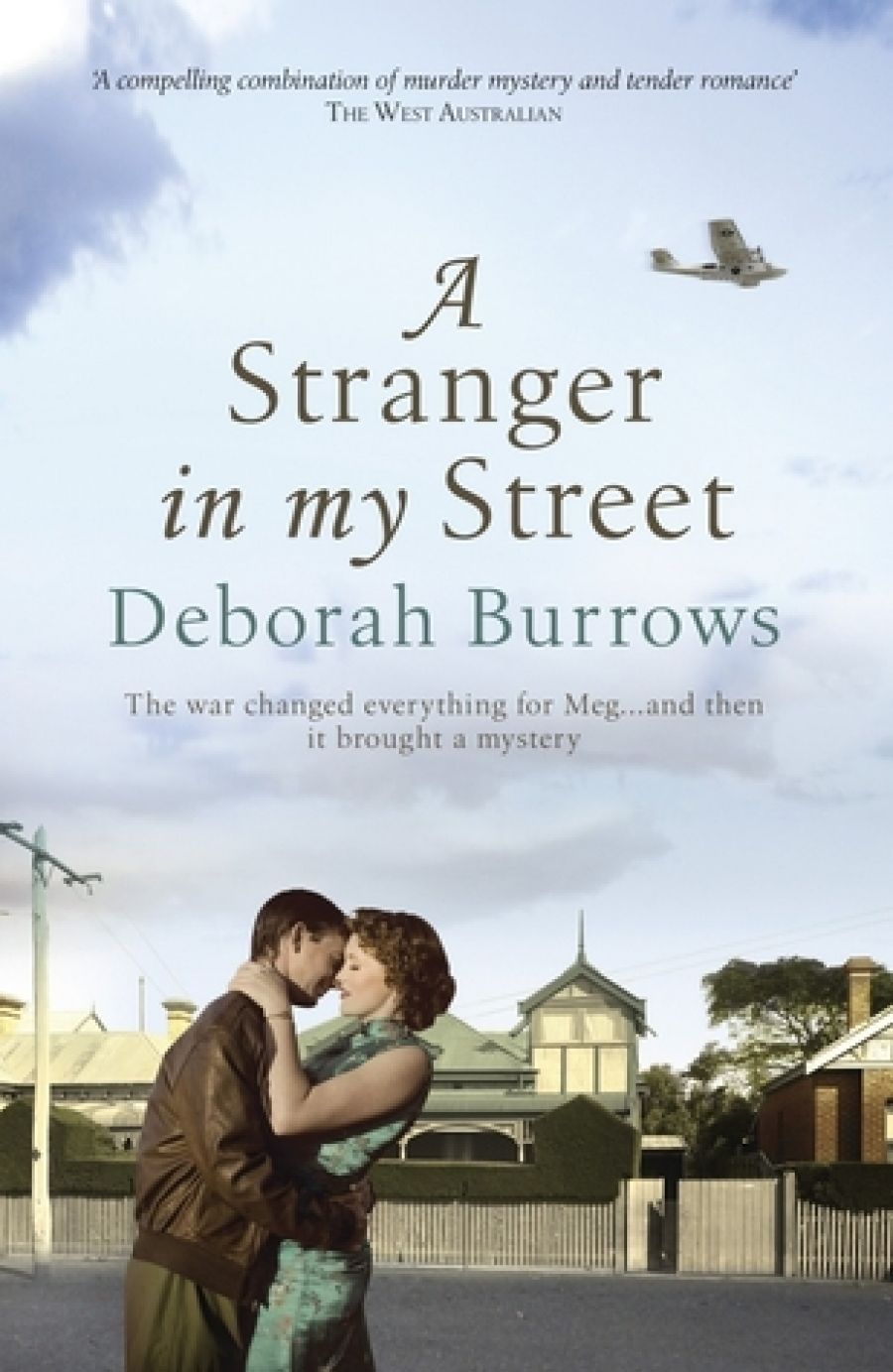
- Free Article: No
- Contents Category: Fiction
- Review Article: Yes
- Online Only: No
- Custom Highlight Text:
Deborah Burrows’s well-researched historical novel, A Stranger in My Street, begins with the protagonist, Meg Eaton, declaring that Sunday, 3 January 1943 was the day her life changed forever. We quickly learn why – the Stranger of the title has arrived in the eponymous Street.
- Book 1 Title: A Stranger in My Street
- Book 1 Biblio: Pan Macmillan, $26.99, 342 pp, 9781742611013
Meg, still recovering from the death of her boyfriend, shot down in a Spitfire over England in 1941, discovers that the Stranger is Tom, his brother, who has just arrived back in Perth as a liaison officer between Australian troops and the US forces that thrived in the city during World War II. When Meg and Tom, a dark, damaged man with a creased brow and facial scar, discover the body of a woman in an air-raid shelter, the ‘whodunit?’ commences. Meg, the naïve but brainy narrator, is let down by weak characterisation. Her emotions are often limited to being ‘happy’ or ‘made sad’, and she suffers from a puzzling lack of resolve, inexplicably putting herself in dangerous situations for the purpose of plot advancement.
The mystery of the murder mounts, and the plot remains suspenseful until the end, but the research-project nature of the book is too obvious; the narrative could be an afterthought to the author’s enthusiasm for trolleybuses, outhouses, and Catalina flying boats. Amid the plethora of clichés, the awkward dialogue, and the aimless exposition that seems to exist to meet a word count, the virtues of the novel are overshadowed.
Meg’s extraordinary insight into the world around her seems incongruous. It feels inauthentic and almost anachronistic when the supposedly uneducated Meg describes Art Deco friezes and Mock Tudor architecture in Perth, or ‘garish propaganda posters’ on the walls. The modern voice of the author creeps into such passages. This is a pity, given her clear intention to portray the vibrant milieu of wartime Perth, with all its shortcomings and prejudices.


Comments powered by CComment